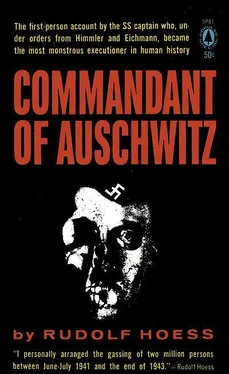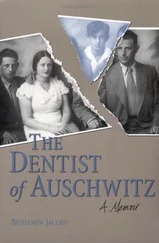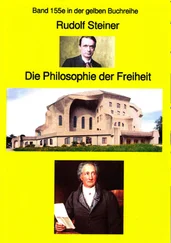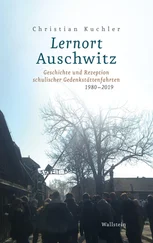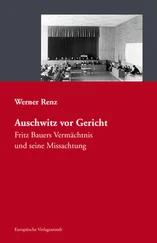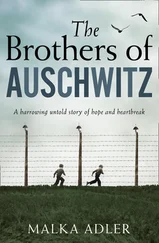Speaking of this terrible holocaust, Sir Hartley Shawcross, now Lord Shawcross, the chief prosecutor for the United Kingdom at the trial of major war criminals in Nuremberg, said in his closing speech, “Twelve million murders! Two-thirds of the Jews in Europe exterminated, more than six million of them on the killer’s own figures. Murder conducted like some mass-production industry in the gas chambers and the ovens of Auschwitz, Dachau, Treblinka, Buchenwald, Mauthausen, Maidanek and Oranienburg.”
To these camps were brought millions from the occupied territories; some merely because they were Jews. Some had been deported as slave labor and were no longer considered fit for work. Had the Germans successfully invaded and occupied the British Isles many thousands of British would have been included in this category. Many of the inmates were Russian prisoners of war, some were victims of the “Bullet Decree,” many were Nacht und Nebel prisoners. [8] These were instructions issued by Wehrmacht Headquarters regarding certain categories of prisoners of war who were deprived of prisoner-of-war-status and sent to concentration camps to be shot in the neck. Nacht und Nebel, Night and Fog. The object of the Nacht und Nebel decree issued by Hitler on December 7, 1941, was to insure that non-German civilians in occupied territories, alleged to have committed offenses against the German occupation forces, were taken secretly (hence night and fog) to Germany unless it could be guaranteed that a death sentence would be passed if they were tried by a military court in their own country.
There they were herded together in conditions of filth and degradation, bullied, beaten, tortured, and starved, and finally exterminated through work or “eliminated,” as the Germans called it, by mass execution in the gas chambers.
The deterrent effect of the concentration camp upon the public in Germany before the war was considerable and had been carefully planned.
Originally the veil of secrecy and officially inspired rumors were both employed to deepen the mystery and heighten the dread. There were many who did not know all that went on behind those barbed-wire fences but few who could not guess. It was not intended that this veil of secrecy should ever be wholly lifted. A privileged few were allowed an occasional peep, and the many civilians who were employed in concentration and labor camps must have passed on to their relatives and friends some account of what they saw within.
But Germany’s enemies were never to have real evidence of the crimes committed there, and plans had been made for the destruction of all the camp sites and the “liquidation” of their surviving inmates which only the rapid Allied advance and the sudden collapse of Germany circumvented.
The world has since learned the full tragedy of the story. The survivors have told of their experiences, and the camps themselves have given testimony of the horrors of which their very walls were silent witnesses. Those who were the first to enter these camps will be forever haunted by the horror of what they saw.
One of the worst of these camps was situated just outside the little Polish town of Auschwitz (Oswiecim), about 160 miles southwest of Warsaw and before the war quite unknown outside Poland. Before the end of the war not less than three million men, women, and children had met their death there by gassing and other means. This book is the autobiography of Rudolf Hoess who was commandant of the camp from May 1940 until December 1943.
In the late afternoon of March 16, 1946, two officers of the War Crimes Investigation Unit of the British Army of the Rhine left Headquarters to interview a German war criminal who had been on the wanted list for over eight months. His name was Rudolf Hoess. After his arrest near Flensburg, on the frontier between Denmark and Schleswig-Holstein, he had been taken to the War Crimes Investigation Center in the historic old town of Minden. The building in which the Center was situated had previously been a German Army detention barracks and was generally known by its odd code name, “Tomato.”
Hoess had previously been in British custody. He had been taken prisoner in May 1945 with hundreds of thousands of other Germans, but as his real identity was not then known he was soon released to go and work on a farm. There he had remained for eight months until at last justice caught up with him.
When the two officers reached “Tomato,” Hoess was brought to them. They did not, however, ask him any questions except to make sure of his identity. The senior of the two had been working on the Auschwitz Camp and other concentration camp cases for many months and had accumulated a great deal of evidence. They needed little, if anything, to complete the picture. Before leaving the Investigation Center, however, to return to Rhine Army Headquarters the officer in charge of the investigation told the former Commandant of Auschwitz exactly what the British already knew about the wholesale exterminations carried out there and of the part he played in them. He then told Hoess in dignified but unmistakable language exactly what he thought about him and those like him, and warned him that in due course he would stand trial by a military court.
Before the interview ended, however, Hoess was asked for one piece of information: how many people had he been responsible for putting to death by gassing during the time when he was the Commandant of Auschwitz? After some thought he finally admitted to two million and signed a statement to that effect. On being asked whether the number was not larger he agreed that the total number of gassings was higher than that, but stated that he had left the camp in December 1943 to take up an SS administrative appointment and was not, therefore, responsible for what happened subsequently.
Hoess’s statement, which was made quite voluntarily, read as follows:
“Statement made voluntarily at … [9] the name was omitted
jail by Rudolf Hoess, former Commandant of Auschwitz Concentration Camp on 16th day of March, 1946. I personally arranged on orders received from Himmler in May 1941 the gassing of two million persons between June-July 1941 and the end of 1943, during which time I was Commandant of Auschwitz.
Signed, Rudolf Hoess.”
By the time the statement was written and signed it was getting late, and as Hoess was noticeably in need of a bath, a shave, and a change of clothes the Warrant Officer in charge of the Center was instructed to take him away, see that he got all three, and, in addition, that he was given a good meal and some cigarettes. On the following day the two investigation officers returned and a detailed interrogation of Hoess took place. He was extremely co-operative and gave a very full account of his stewardship and displayed an amazing memory for detail. At the end of three or four hours his statement was condensed to eight typewritten pages which he read through and signed. It is noteworthy that this document differs little, and in no material details, from what Hoess later stated in evidence at the Nuremberg Trial of Major War Criminals and wrote in his autobiography in Cracow nearly twelve months later. He certainly never sought to hide anything that he had done, and was more prone to exaggerate than understate, for he regarded it as a compliment to his zeal, capacity for work, and devotion to duty to have carried out his gruesome orders with such dispatch and efficiency.
It was on May 1, 1940, that SS Hauptsturmführer Rudolf Franz Ferdinand Hoess was promoted and transferred to Auschwitz from Sachsenhausen where he had held the appointment of Adjutant to the Commandant since 1938. Auschwitz was to be an important camp, principally for the suppression of opposition to the Nazi occupation of Poland, to which the inhabitants of that unhappy country were not taking too kindly. So an efficient commandant had to be found.
Читать дальше
